Purchased for $779,000 or roughly $1,073 per square foot in February of 2015, the top-floor, one-bedroom unit #605 in the award-winning modern development at 8 Octavia Street, “ideally located just steps from restaurants, shopping, nightlife, coffee shops and multiple transit options” in the heart of Hayes Valley, returned to the market priced at $725,000 this past March.
And having just closed escrow with a contract price of $720,000, the re-sale of 8 Octavia #605 was officially “within 1 percent of asking!” and “nearly $1,000 per square foot!” but down 7.6 percent from the first quarter of 2015 on an apples-to-apples basis. And yes, that’s despite reports of a “surging” market, particularly for Hayes Valley, and the fact that the frequently misreported index for “San Francisco” condo values is “still up over 29 percent!” over the same period of time.
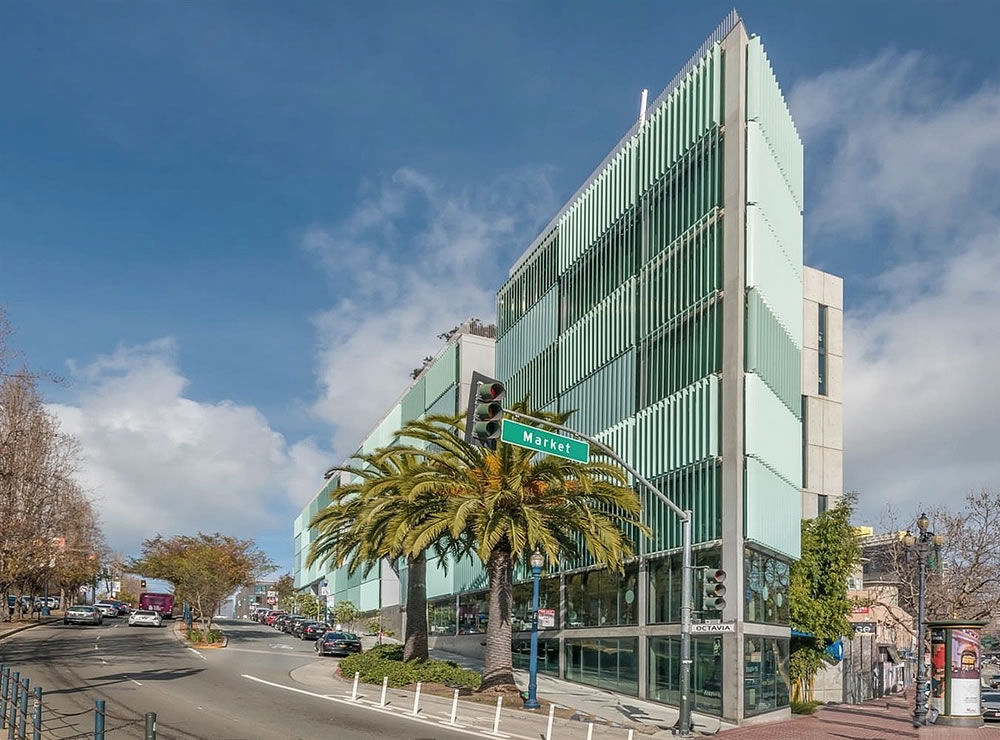
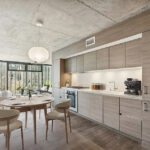
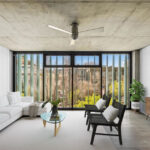
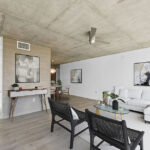
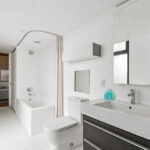
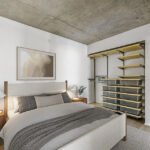
That new condo smell has its price… Another Saitowitz victim.
Yeah, it’s the architect’s fault the property is on a freeway off ramp, Trump tanked the economy and then SF mishandled the recovery.
Ah that’s why home prices in most places crashed since 2020… Trump… I understand your point of view, but you’re letting politics create a huge blind spot that does not allow you to rationalize data and trends.
“Yeah, it’s the architect’s fault the property is on a freeway off ramp, Trump tanked the economy and then SF mishandled the recovery.”
The freeway on-ramp somehow wasn’t a problem in 2015. SF and national real estate boomed during peak covid, long after the orange dude was replaced. Other markets that had real estate bubbles are seeing price drops. I realize the deflating RE tvrd must be polished, but please come up with better excuses.
No Kidding – the freeway off ramp is an improvement! There used to be a double decker freeway going past this parcel and snaking its way through Hayes Valley to Turk and Gough. Talk about Brutalism!
@Socketthome, I feel compelled to clarify, as it seems some may not grasp this fundamental aspect: Negative factors are typically downplayed in seller’s markets, as seen in 2015, and highlighted in buyer’s markets, such as the 2024 market so far. The repercussions of a president’s poor decisions can persist long after their term ends. For example, consider Reagan and the HIV crisis. Although HIV-related deaths peaked in the mid to late ’90s during Clinton’s presidency, it was Reagan who, during his administration, significantly hindered research into understanding and preventing HIV.
Similarly, Trump’s inadequate handling of the pandemic left local officials to implement lockdowns that resulted in significant unemployment. Following the lockdowns, San Francisco failed to tackle the escalating crime and blight, rendering the city less appealing. This downturn was particularly impactful during a period when remote work diminished the need to reside near the FiDi and SOMA or trendy local businesses that ceased to exist
Matt, I think your reply may be meant for one of the other comments. Or…my comment came across as sarcastic? This area has improved tremendously since the demolition of the freeway, which many newer SF residents may not realize. I posted a link with before photos, but SS took it down. As a matter of fact, I support your point of view 100 percent on the long-term effect of presidential decisions.
I was addressing another unfounded criticism of Saitowitz. In a seller’s market, negative factors tend to be downplayed, whereas in a buyer’s market, they’re highlighted—this is pretty common knowledge, isn’t it?
You might have a bit of pandemic amnesia. Do you think Trump’s pandemic response was effective or sufficient? It’s challenging to find research supporting that viewpoint. In 2019, he discontinued the program tasked with monitoring potential pandemics—three months before the outbreak in Wuhan—simply because it was established under Obama. By February 2020, he was asserting that the pandemic would disappear on its own. In March 2020, he suggested unproven remedies, like ingestible bleach or UV light were on the horizon, while then taking the mRNA vaccine and spreading misinformation about its alternatives. These actions likely contributed to economic instability, as supported by employment statistics from 2019-2021.
Regarding real estate, urban areas in San Francisco and Oakland did not enjoy the same boom as Bay Area bedroom communities. There’s been a decline in property values in urban SF, whereas areas like Berkeley, coastal SF and any decent Bay Area suburb with a relativel decent school distric have seen massive appreciation. The mismanagement of reopening strategies in SF and Oakland is still affecting these cities, a topic that is widely discussed and not just my personal opinion.
I believe these factors adequately explain why that particular unit sold at a loss, more so than any design decisions by the building’s original architect.
Hi Matt,
Trump has not been in office for over 3 years and has had no impact on local real estate prices or municipal policies that would impact them. Try citing your local leadership and/or potential investors next time. Nice try though!
Nice try trying to shift the blame to Trump, real San Franciscans know it’s been Ronald Reagan’s fault the whole time!
Both. Both is good.
Concrete ceilings, open closet in bedroom, freeway ramp – what’s not to love?
plenty of people like concrete brutalist vibes and the view is pretty nice. the closet tho – wtf!
apparently NOT that plenty…
“Concrete ceilings, open closet in bedroom, freeway ramp”
it was a very cunning plan to install the concrete ceiling, open closet, and freeway ramp after the purchase in 2015…
that building is just …. ugh
I kind of like this building, but I think it could have been much more “pretty” or interesting by having variations in height of the building sections and different colors of the louvres. Maybe even a rainbow pattern.
“Maybe even a rainbow pattern.”
I hope this is sarcasm. I would like to see the expression on Stanley’s face after your application of rainbows, ponies, glitter, and lipstick to his maximum security condo complex. I’m not a fan of Saitowitz’s assaults on humanity; this building might be hostile, but at least it’s honestly hostile and not a feelgood freakshow.
Srsly your comments are solid gold. never change.
This property is most definitely NOT in the heart of Hayes Valley. The edge of HV is three blocks away.
Unfortunately, whichever agent wrote the listing included the sentence “the central Hayes Valley location is ideally located just steps from restaurants, shopping, nightlife, coffee shops and multiple transit options” (emphasis mine).
As you’ve pointed out, Hayes Valley’s southern edge is Oak St., which is three blocks northwest of this building. The fine print on realtor.com said it is “located in the Lower Haight neighborhood”. But Hayes Valley is having a bit of a moment right now; AI startups have begun dominating the local culture, dubbing it “Cerebral Valley” (at least among those living in the so-called ‘hacker houses’), so maybe the listing agent decided to reach in hopes of getting an inflated offer from someone unfamiliar with S.F. that wanted to ride the hype wave.
Boom Bust cycles
Buy in the bust and sell in the boom…
The life of a San Franciscan
Bingo!
I like the building overall, but the majority of the units, like this one, I cannot stand.
Not this unit, but in the stack of units facing Market Street all of the Saitowitz design fetishes come together rather nicely. The living room space has those louvers on three sides, one of the bathrooms actually work and you even have exposures on three sides.
In other units the concrete overwhelms as in this unit, some are doomed to be in constant shadow just to articulate the building mass, and the design kink to model the bathrooms after some designer’s formative experience in a prison environment suck out the fun. Plus, while located close in, smack in the middle of the City, the location is very inconvenient – steep uphill/downhill walks in any direction and the weirdness of Octavia Blvd. It manages to not be a pleasant walking place in the middle a very walkable part of town.
Those concrete ceilings are true architectural genius. Everyone loves them for their honesty. One hundred years from now they will be treasured for their creative prison-like vibe, and people who foolishly cover them will be as embarrassed as those who put aluminum siding on Victorians. Willis Polk, Maybeck, Coxhead, James Francis Dunn, and Saitowitz, the geniuses of SF residential architectural history. We are so fortunate to have one of them in our own time.
I get the sarcasm here, but in fact, certain kinds of architects (and they are many in number) do love Brutalist buildings precisely because, so it’s enthusiasts say, the materials aren’t trying to be beautiful by being something that they aren’t. The raw/cast concrete is ugly and that is part of the aesthetic. That being said, 8 Octavia Street isn’t nearly as in-your-face Brutalist as that cast concrete columbarium at 855 Folsom Street.
If I lived that long, I would fully expect that both buildings will be here one hundred years from now, even if they aren’t being lived in, because the climate/carbon impact, in addition to the expected dust and noise pollution as well as the disposal fees and demolition effort necessary to take down all of that cast concrete would be so enormous that no one will ever undertake it.
I’ve never seen any architecture magazine ask Saitowitz about that fact in the many, many interviews he’s done over the years, but I’d bet that’s one of the reason’s he so fond of this style. Each building is a monument to the architect’s outsized ego that will remain standing until well after the climate apocalypse renders the planet inhospitable to human life which — in contrast with the originators of Brutalism in the late fifties and sixties — is probably the (his) point.
All of the anti-Saitowitz crybabies on here crack me up 😛 there’s far uglier generic apartments/condos. At least at 855 Folsom, all of the units at least have double height ceilings/windows in the living space, which makes them feel much more open and less cavelike than this one on Octavia. The IKEA all white prefab aesthetic of most new Hayes Valley developments (including all the staging furniture in these pictures) is much more unlivable imo.
I love that the defense of Saitowitz buildings is that there are far uglier buildings out there. I think that’s called a race to the bottom.
That’s not at all what I was saying – many people like living in generic looking suburban apartments. Many people like brutalist buildings. It’s all personal, and neither has much of an impact on real estate value despite all the endless whining about aesthetics on here. 🙂
there may be at most 2 uglier building in SF. this is definitely in the top 1%
this is one of the 3 ugliest building in SF . When i commuted to the peninsula, i actually changed my route to avoid having to look at it everyday.
I’m an architect, and like many who appreciate architecture I also find it beautiful. I also like the charm of my modern Edwardian. Glad to have both in town.
I couldn’t find a floor plan but is the access to the bedroom really limited to going through the bathroom? No windows in the bedroom?
Nevermind, I can see the bedroom door just past the fridge in the kitchen.
I like this building as a strong and distinctive architectural statement when entering the city. The floor plans are not to my taste, but there’s a market out there for his designs.
I like the exterior. It changes pattern and has movement. But looking out from interior is like being behind prison bars. “Interiors by Stan Quentin.”